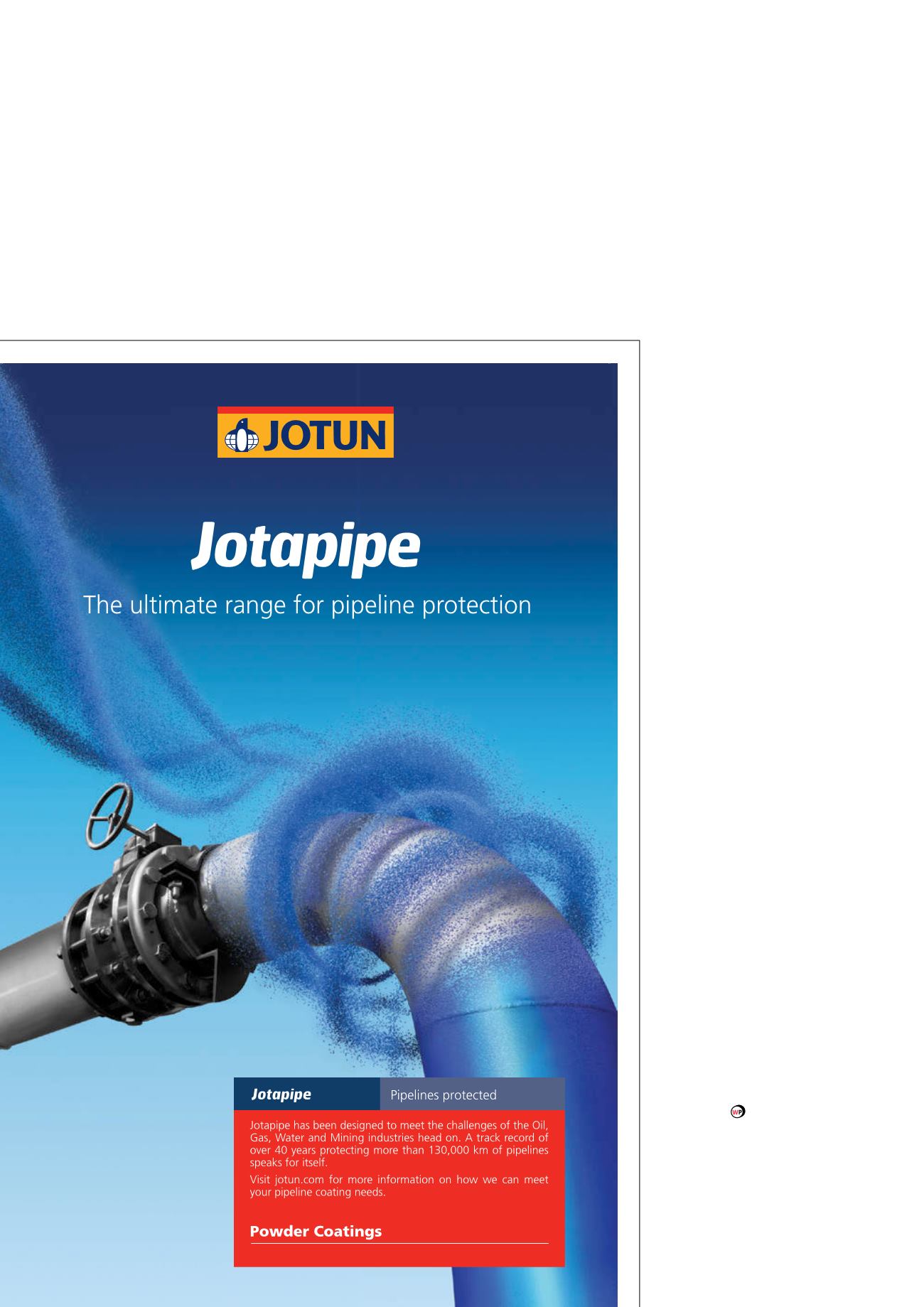
vacuumed and recycled the abrasive for use on the next IFJ. A
visual inspection using an onboard camera ensured the proper
level of cleanliness was achieved and no debris remained. The IFJ
surface was then ready to receive the protective coating.
Coating the IFJ
CRTS’ coaters are the heart of internal corrosion prevention and
one of the most complex machines that CRTS designs and builds.
Years of design and testing have culminated in machinery that
uses various coating heads to precisely apply both FBE and liquid
coatings on offshore and onshore projects. For this project, the
customer chose SP 9888, a two-part liquid epoxy, to protect the
nearly 13 000 submerged IFJs. The plural component liquid coater
has infinite ratio adjustment with its range, allowing its use with
many different types of materials. The coating operator set the
pump speeds and oscillation distances to accommodate the pipe’s
cutback lengths. This, along with its independent heat controls
for the material components, allowed for mixing and application
conditions as recommended by the coating manufacturer.
The liquid coater was also outfitted with wireless telemetry
and video to allow remote operations. These features enabled
the operator to remotely send the liquid coater to each IFJ for
coating. The camera lets the operator view the weld to ensure
it’s coatable (no abrasive or welding residue); line up to the
weld; trigger and observe the actual coating sequence. Another
feature of the onboard camera is that it allows for instant visual
inspection of the IFJ. Inspecting
the coated IFJ at this stage meant
that if a coated weld had any
visual defects, it could be repaired
before any product entered the
pipe. CRTS also has a fusion-bond
epoxy coater for FBE projects.
Conclusion
CRTS applies its robotic
technology to address the high
cost of monitoring, repairing and
rehabilitating pipelines by using
a simple process of cleaning,
coating and inspecting internal
field joints and, if requested, the
internal length of the pipeline. This
foundation of internal corrosion
prevention attempts to benefit
the pipe owner, the public and
the environment by addressing
corrosion before it has a chance to
form and wreak havoc on assets.
This seamless corrosion
prevention system works
alongside factory-coated pipe to
meet PHMSA’s goal of reducing
“the occurrence of defects that
can lead to corrosion-induced
failures.”
1
While this PHMSA
report focuses mainly on US
transportation pipelines, it is a goal
worthy of any pipeline project.
Part of the reduction goal
on CRTS’ part is designing and
building equipment that works
efficiently with the project’s
geographical and other challenges.
For this particular customer, the
additional preventive measures
will result in lowered OPEX and
repairs over a lengthy lifetime of
production.
Reference
1.
Fact Sheet: Internal Corrosion. Retrieved
from:
/
comm/FactSheets/FSInternalCorrosion.


